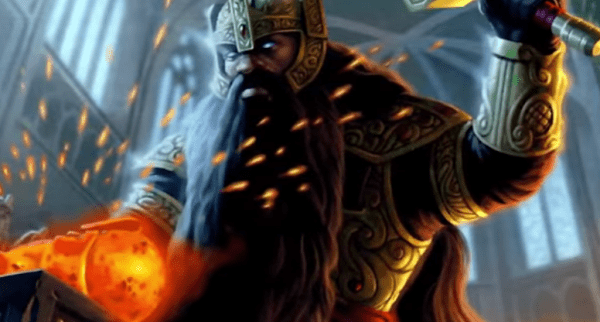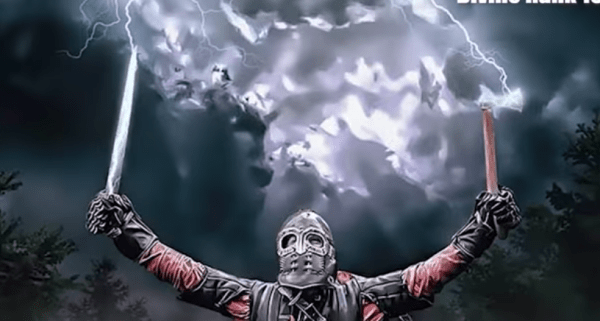Often used for trickery, Major Image can be used by almost any spellcaster to create a realistic image of an object, creature, or event within 120 feet of range. As long as the image is no bigger than a 20-foot cube, the caster can also control the image to move as naturally as the caster wants or even carry on a conversation.
What is Major Image 5e: Mechanics and Requirements
Attributes
- Casting time: 1 action
- Level: 3
- Range: 120 feet
- Target: Self (120 feet)
- Components: Verbal, Somatic, Material (a bit of fleece)
- Duration: Concentration, up to 10 minutes
- Classes: Bard, Sorcerer, Warlock, Wizard
Major Image Description
You create the image of an object, a creature, or some other visible phenomenon that is no larger than a 20-foot cube. The image appears at a spot that you can see within range and lasts for the duration. It seems completely real, including sounds, smells, and temperature appropriate to the thing depicted.
You can’t create sufficient heat or cold to cause damage, a sound loud enough to deal thunder damage or deafen a creature, or a smell that might sicken a creature (like a troglodyte’s stench). As long as you are within range of the illusion, you can use your action to cause the image to move to any other spot within range. As the image changes location, you can alter its appearance so that its movements appear natural for the image.
Physical interaction with the image reveals it to be an illusion, because things can pass through it. If a creature discerns the illusion for what it is, the creature can see through the image, and its other sensory qualities become faint to the creature.
At Higher Levels: When you cast this spell using a spell slot of 6th level or higher, the spell lasts until dispelled, without requiring your Concentration.
Player Handbook DnD

Advantages and Drawbacks
Advantages
- Long Range: As long as the caster can see space within 120 feet, the caster can make an image within a 20-foot cube.
- Make it Big!: Think of it as a piece of land- as long as it fits in a 20-foot cube, the image can be created. It can be 20 feet long, 20 feet wide, and 20 feet tall.
- Create whatever you can imagine: The caster can create anything they can think of- an environment, a creature, an object.
- Believable Magic: the image created is as realistic as possible. It can smell, feel, sound, and of course, look like whatever the caster wishes as long as the attributes don’t do damage (ex: an image of a creature cannot have enough heat to cause damage). The caster can also alter the image to match its surroundings when it moves.
- Casting Time: despite being a concentration spell, Major Image only needs one action to cast.
- Control the Image: as long as the caster is within 120 feet of the image, the caster can control the image however they please. They can have it speak, move around naturally, etc.
- Upcasting: when cast using a level 6 slot or higher, the spell is permanent until dispelled without Concentration.
Disadvantages
- One image at a time: Major image is limited to creating only one image at a time until it is cast as a level 6+ spell. One cannot create more than one creature or environment at once unless they make it permanent using 6+ spell slots.
- Non-damaging spell: the Major Image cannot deal damage to anything.
- Easily distinguishable: players who like to abuse investigation checks will easily be able to figure out that the image is an illusion if they roll higher than the caster’s spell save DC. Also, things can pass straight through the image, which could reveal the fact that the image is an illusion if the players put two and two together.
- Needing Concentration: this spell isn’t ideal for combat since it requires Concentration (unless casting as a level 6+ spell) to keep the image and action to have the image do whatever the caster needs it to do.
- Make It Count: The image only lasts 10 minutes and uses a level 3 spell slot unless it is cast as a level 6+ spell. That said, if the image interacts with a creature/person, they will not be too happy to find out that the caster was tricking them with a spell after 10 minutes.

Best Uses for Major Image 5e
1. Create a Scenery
The most common use for Major Image is to give the illusion to other people of something that is not there. If used enough with level 6+ spells, the caster can create an entirely illusionary scenery.
For example, they can make an empty house look like creatures, furniture, etc inhabit it. Of course, all of them will be illusions.
2. Fear
Evil spellcasters can cast the image of dangerous monsters to wreak havoc and fear in villages. Another common use to instill fear: setting illusionary fire to buildings. Major Image can also replicate the image of spells to make themselves look stronger than they are.
For example, Whirlwind 5e is a level 7 spell that low-level spellcasters cannot use. However, if they are convincing enough, a person wouldn’t want to fight someone much more powerful than them.
3. Convince/Manipulate
Although it may be arguably immoral, casters may also use Major Image to manipulate others into doing their bidding. For example, many DMs and players have had people use Major Image to create the illusion of a player’s loved one to convince either to stop fighting.
Furthermore, since Major Image can have the illusion hold complete conversations, the caster can also have the image convince a stubborn noble by creating a Major Image of another fellow noble.
4. Gather Intel
Similar to convincing and manipulating, the caster of Major Image can create a creature/person to infiltrate enemy grounds. The Major Image can be something small that speaks Common or a simple person that would attend the enemy event. As long as the caster stays within the range, the illusion can gather intel and report whatever they learned to the caster.
5. Distract
Casters like to also use Major Image as a distraction in caves or dungeons infested with monsters. Since the image can also create realistic sounds to mimic themselves.
They can clone themselves and have them make sounds elsewhere to make the monsters swarm toward the image, giving the party a way past the creatures. This tactic can also be used against guards.
Advice and Final Thoughts
Many combat-loving players don’t see much of a point in this spell but will easily get around once they discover the many uses and how it’s limited only to size and creativity.
To make it, so people don’t do an Investigation check or make physical contact with the spell, it would be best to have the image inherit some good charisma or people skills. The more detail and intricate the image, the better, unless it’s for a task such as distracting.
Roleplayers and world builders love to abuse this spell almost as much as DMs due to the sheer chaos and ridiculousness people can create within a 20-foot cube. Major Image can tell a lot about what kind of player the caster is- are they flashy? Maybe they like things that are simple and efficient. It all depends on what their mind can think of.
Major Image FAQ
Do I have to see my Major Image to move it?
This question is quite controversial among DMs, so it’s usually the DM’s discretion on whether or not this rule is implemented into the spell. However, it is common belief since the rulebook does not specify whether or not the caster needs to see it.
Most DMs believe that as long as the caster is within range, the image should be able to move as the caster pleases. Furthermore, most DMs prefer it this way since it gives the caster more wiggle room to play around with the spell.
When in doubt, though, ask your DM. Some DM rules differ from others.
Can Major Image 5e create light sources?
No. Since the major image is a glamor/figment, it cannot create actual light, just as it can’t create sufficient heat, cold, or thunder/lightning damage. It can, however, create darkness.
Are there exceptions to Major Image only creating one image?
Once again, this is mostly at the DM’s discretion. However, it is agreed upon that swarms of creatures like insects, rats, etc., can be created since it’s considered a “visible phenomenon”.
Can I kill a Major Image?
No. The only way for a Major Image to disperse or disappear is for the caster to be out of range or for the caster to dispel the illusion. If anything or anyone is to attack the image, the attack will pass straight through it as if nothing happened.
